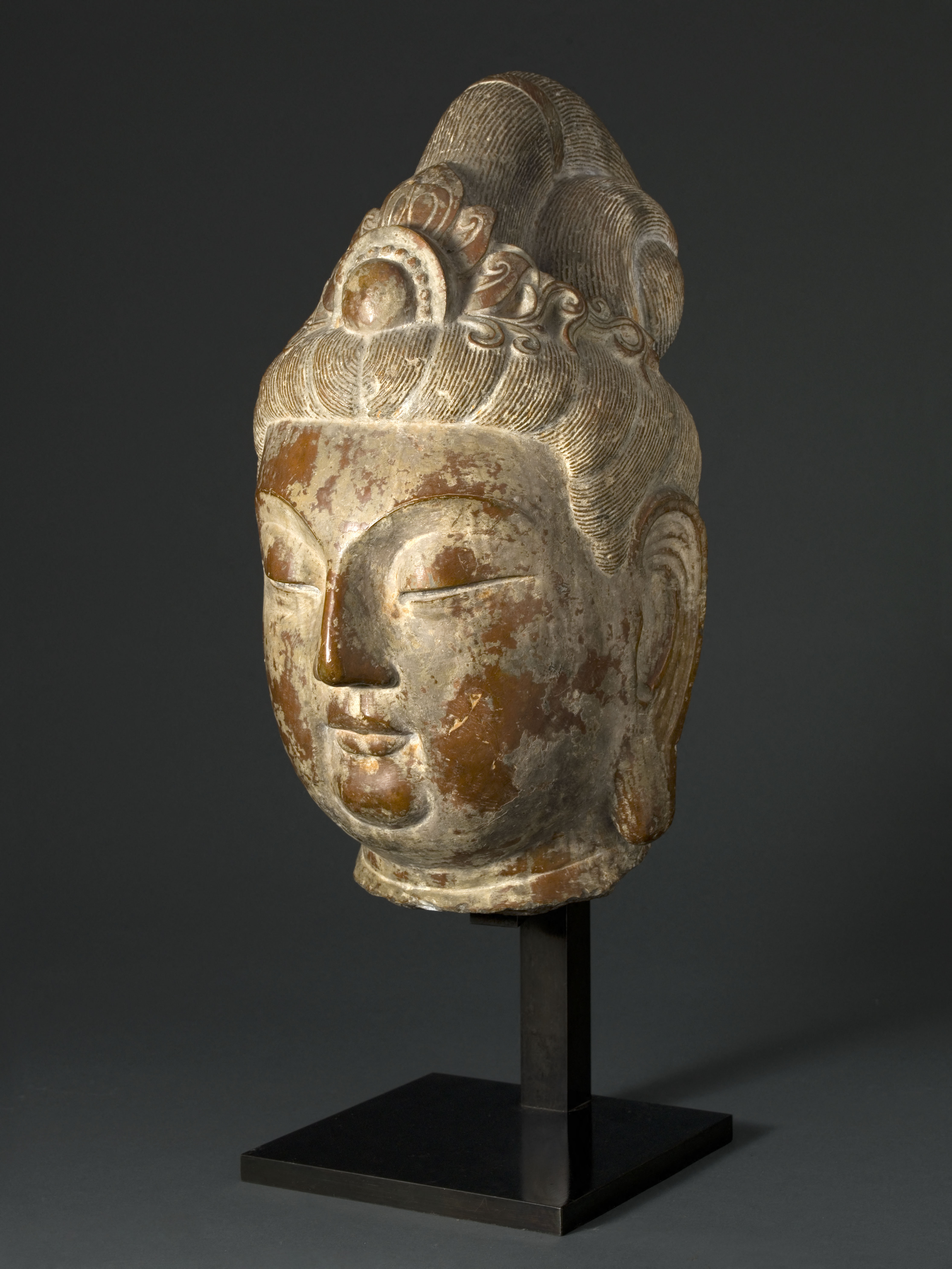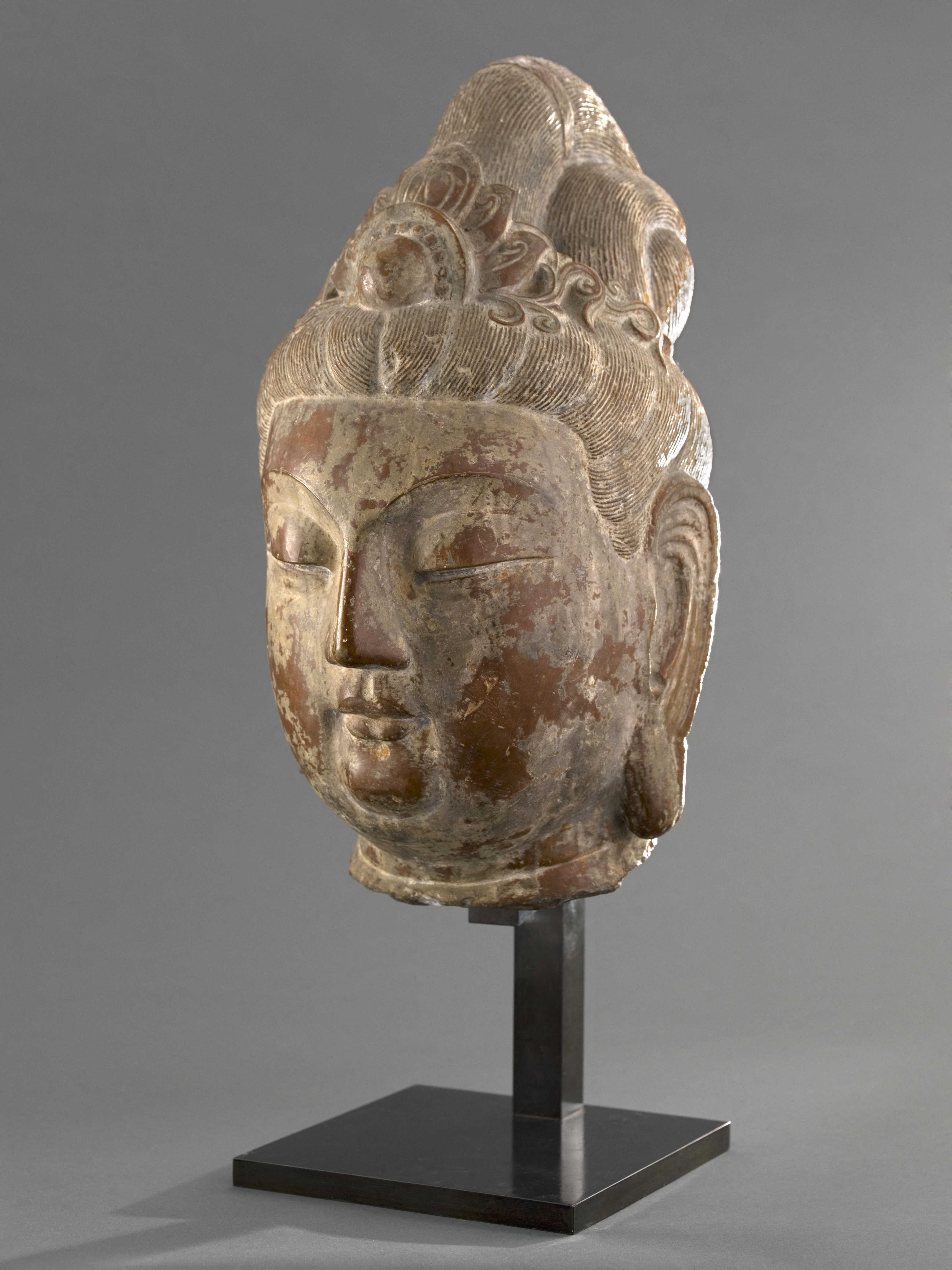
Tête de Bodhisattva
Grès, Taille = taillé
Statue
Achat
M.C. 2008-3
Chinese sculpture of the last three dynasties has long been disregarded by specialists, often fascinated by works from more ancient periods. Yet it offers a number of exceptional pieces, albeit without the stylistic renewal and mystical interiority of the works from the centuries following the introduction of Buddhism in China, and despite the presence of numerous stereotypical works.
This head, from several old French collections, is among them. It belonged to a bodhisattva statue. In “Great Vehicle” Buddhism, these spiritual beings, who are “committed to enlightenment” to escape the cycle of rebirths, renounce their own salvation out of compassion, in order to save all sentient beings. Their ten “perfections” are models for worshippers. Worshipping them enables the pious to overcome the trials of life and be guided in their spiritual development. One of the most prominent bodhisattvas, Avalokiteshvara, was associated in China with a Taoist goddess and is generally portrayed as androgynous. Countless depictions of the deity exist. Despite the absence of a small image of the Western Buddha at the front of the hair, this is probably the figure represented by the Cernuschi Museum head.
The work is striking in the idealised stylisation of the facial features, the perfect curve of the nose, the interiority expressed in the half-closed eyes and the distance from mortal beings suggested in the slightly sulky expression of the mouth. The carefully depicted hair, even at the back, rendered by small parallel grooves, adds to the overall perfection of the whole.
After a brief renewal of 3rd- to 7th-century styles, the canons of Buddhist representation in China would stabilise circa 700. The great works of the Tang era (618-907) would serve as recurrent models for artists to the present day. The best workshops would contribute many variations to this norm, far removed from traditional representation. Much remains to be written about the history of Chinese Buddhist statuary from the 14th to the 19th century. While we still know little about these subtle modulations, it seems reasonable to date this piece cautiously to the early Ming period (1368-1644). In view of its quality, however, certain specialists date it back to the Song period (960-1279).
